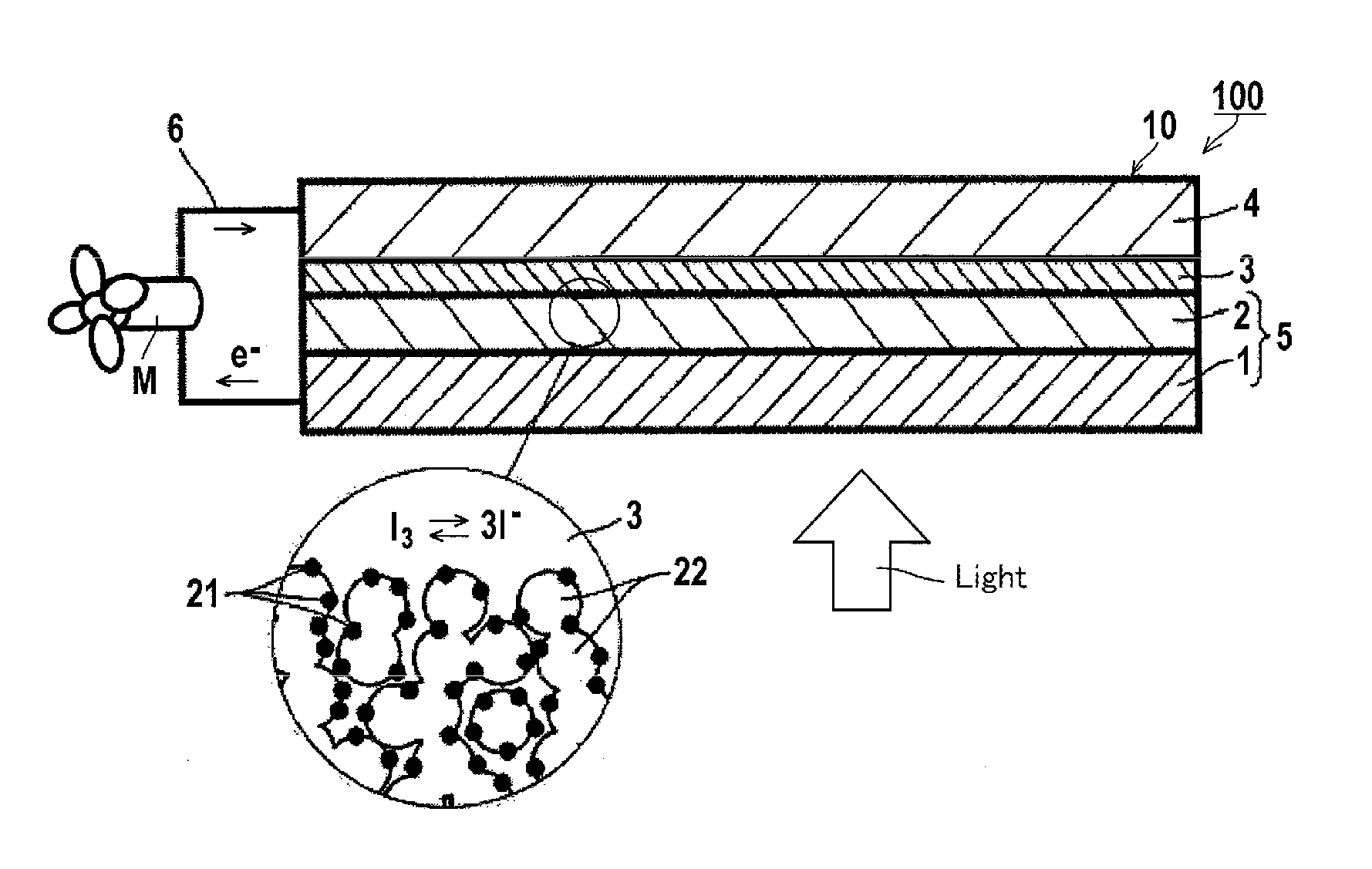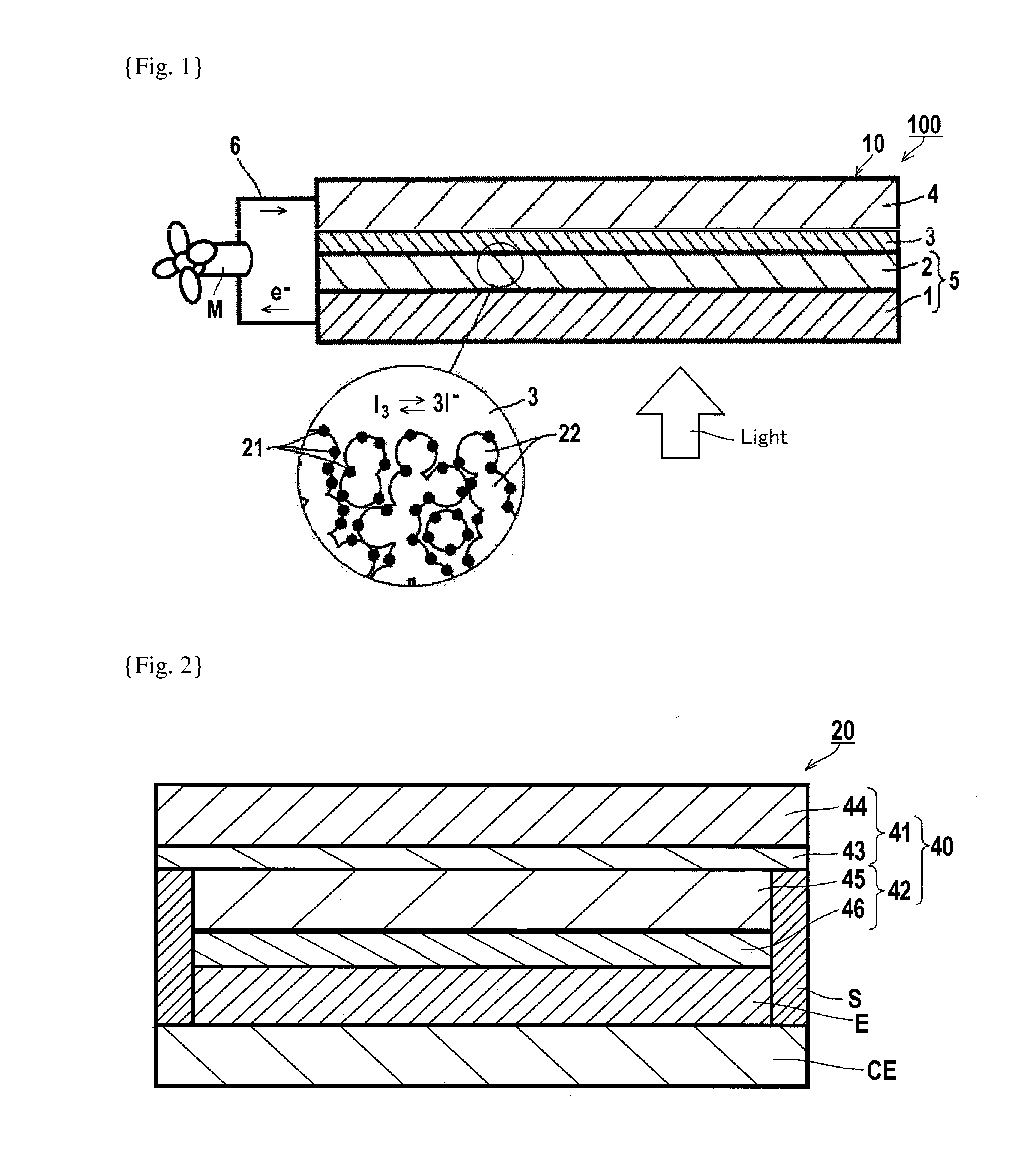Photoelectric conversion element, dye-sensitized solar cell, metal complex dye, dye solution, dye-adsorbed electrode, and method for producing dye-sensitized solar cell
a technology of photoelectric conversion and solar cell, which is applied in the direction of ruthenium organic compound, sustainable manufacturing/processing, and final product manufacturing, etc., can solve the problems of inability to meet the requirements of high-efficiency photoelectric conversion, etc., to achieve excellent adsorption stability, improve photoelectric conversion efficiency, and increase the effect of optical absorption
- Summary
- Abstract
- Description
- Claims
- Application Information
AI Technical Summary
Benefits of technology
Problems solved by technology
Method used
Image
Examples
example 1
Synthesis of Metal Complex Dye
[0357]Hereinafter, the synthetic method of the metal complex dye of the present invention will be described in detail, but starting substances, dye intermediates and synthetic routes are not limited to these.
Synthesis of metal complex dye D-1
[0358]The metal complex dye D-1 was synthesized according to the following scheme.
(i) Synthesis of Compound 3
[0359]In 62 ml of THF (tetrahydrofuran), 1 g of Compound 1 and 2.08 g of Compound 2 were dissolved. Thereto, 371 mg of Pd(PPh3)4 and 12.5 ml of a 2 N aqueous solution of potassium carbonate were added, and then the mixture was allowed to react at 80° C. over night. To the solution thus obtained, 100 ml of water, 40 ml of hexane, and 60 ml of ethyl acetate were added, and the liquid-liquid extraction was conducted. Thereafter, the organic layer was concentrated, and the crude product thus obtained was purified by silica gel column chromatography, thereby obtaining 1.59 g of Compound 3.
(ii) Synthesis of Compoun...
example 2
Dye-Sensitized Solar Cell
[0449]The dye-sensitized solar cell was fabricated in the following manner, and subjected to the measurement of IPCE (quantum yield) at 900 nm.
[0450]According to the procedure described below, a photoelectrode having the same configuration as that of the photoelectrode 12 shown in FIG. 5 of JP-A-2002-289274 was produced, and using the photoelectrode, a dye-sensitized solar cell 20 of a scale of 10 mm×10 mm having the same configuration as that of the dye-sensitized solar cell 20 shown in FIG. 3 of JP-A-2002-289274 except for the photoelectrode, was produced. The specific configuration thereof is shown in FIG. 2 attached to the present application.
[0451]In FIG. 2 of the present application, 41 denotes a transparent electrode, 42 denotes a semiconductor electrode, 43 denotes a transparent electrically-conductive film, 44 denotes a substrate, 45 denotes a semiconductor layer, 46 denotes a light-scattering layer, 40 denotes a photoelectrode, 20 denotes a dye-sen...
example 3
[0465]The adsorption stability of metal complex dye was evaluated in the following manner.
[0466]For evaluation of the adsorption stability (adsorptive power) of the metal complex dye onto the surface of semiconductor fine particles, titanium dioxide was used as the semiconductor fine particles, and the desorption rate of the metal complex dye from the surface of the titanium dioxide was used as an index.
[0467]The desorption rate of the metal complex dye was calculated by means of a Quartz Crystal microbalance with Dissipation monitoring (QCM-D) intermolecular interaction measuring apparatus E1 (manufactured by Meiwafosis).
[0468]Paste A (anatase, average particle size: 25 nm) was printed by screen printing (film thickness: 20 μm) on a gold sensor (manufactured by Meiwafosis) for use for the QCM-D. By calcining the thus-printed gold sensor at 450° C. for 1 hour in the air, a gold sensor having a semiconductor layer adsorbed thereon was prepared.
[0469]The thus-prepared sensor was insta...
PUM
| Property | Measurement | Unit |
|---|---|---|
| wavelength | aaaaa | aaaaa |
| absorption wavelength | aaaaa | aaaaa |
| absorption wavelength | aaaaa | aaaaa |
Abstract
Description
Claims
Application Information
 Login to View More
Login to View More - R&D
- Intellectual Property
- Life Sciences
- Materials
- Tech Scout
- Unparalleled Data Quality
- Higher Quality Content
- 60% Fewer Hallucinations
Browse by: Latest US Patents, China's latest patents, Technical Efficacy Thesaurus, Application Domain, Technology Topic, Popular Technical Reports.
© 2025 PatSnap. All rights reserved.Legal|Privacy policy|Modern Slavery Act Transparency Statement|Sitemap|About US| Contact US: help@patsnap.com



